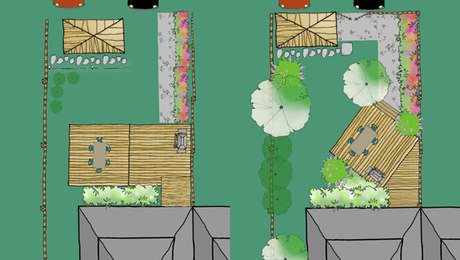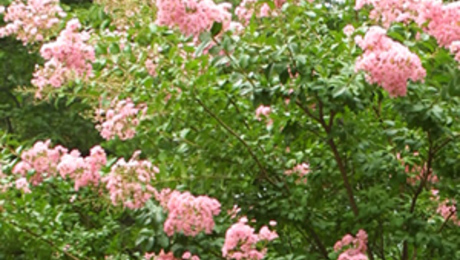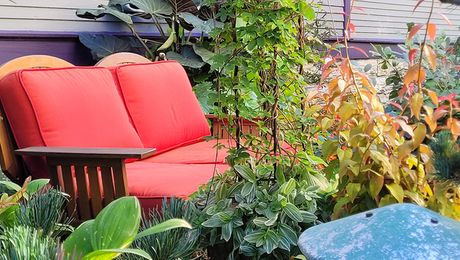Ask the Expert with Linda Chalker-Scott, extension urban horticulturist at Washington State University’s Puyallup Research and Extension Center, and author of The Informed Gardener
1. Does the timing of pruning adversely affect plants? If so, what exactly does it do to them?
— Jerry Marsket, Louisville, KY

Trees and shrubs are used to being pruned – that’s what herbivores do! But when they are pruned will affect their growth, and gardeners can use this information to their benefit. If you prune trees and shrubs while they are actively growing, it stimulates more plant growth. That’s because the plants are producing lots of sugars to support growth and the act or pruning removes growth inhibitors. Overpruning, however, can have the opposite effect by removing too many of the leaves and leaving the plant without sufficient resources for regrowth. Think of this as a trim rather than a buzzcut.
If you prune later in the year, after the plants have stopped actively growing or are dormant, it tends to stunt growth. Pruning during this time both reduces size and removes stored sugars. This is a handy way to keep trees and shrubs smaller, though pruning does need to be repeated annually.
And never prune after transplanting! This redirects resources from the roots (where they are needed for new root growth) into new leaves (which need lots of water). You’re left with a plant that requires more water uptake but without an actively growing root system to provide that water.
2. I’ve heard we shouldn’t be feeding our plants with phosphorus anymore. Why not?
– Amanda Schall, Burlington, Vermont
Plants do need phosphorus – a lot of it – but our garden and landscape soils usually have more than enough. The NPK recommendation we’re all used to seeing is derived from intensive agricultural production practices and isn’t relevant to a home garden. There are at least three bad things that overuse of phosphorus will do:
- Interfere with a plants’ ability to take up iron and manganese. These two nutrients are needed to make chlorophyll, and without them leaves will exhibit interveinal chlorosis.
- Interfere with the ability of mycorrhizal fungi to colonize plant roots. Without mycorrhizal fungi, plants have to grow more roots to take up the water and nutrients that their fungal partners normally provide. In fact, mycorrhizae develop best under low phosphorus conditions.
- Create water pollution problems. Excess phosphorus ends up downstream somewhere. This creates algal blooms, and eventually these blooms die off. When the algae die, bacterial populations in the water increase and use up available oxygen. The lack of oxygen then creates dead zones and massive fish die-offs.
Before you add any source of phosphorus, organic or otherwise, you should send a soil sample to a soil testing lab (I recommend university labs as good objective resources). The only time you should add more phosphorus is if your phosphorus levels are deficient.
3. What kind of mulch should I use to overwinter for hardiness? Do I pull it back in spring?
–Jenn Kortera, West Chester, Pennsylvania
By and large, the best mulches are those that are coarse and deep. This insulates the soil against freezing and allows root growth to continue throughout the winter. Roots never go dormant, so as long as the soil doesn’t freeze they continue to grow, though at a slower pace.
Ideally, you would use an organic mulch. Good choices include wood chips, straw, and hazelnut shells. All of these allow for good drainage and air movement. A little bit of compost or shredded leaves are fine, too, but they should be covered with the coarser mulch. Otherwise they tend to compact with rain and create drainage and aeration problems.
If you don’t have access to the coarse woody mulches, consider using something else “fluffy.” Shredded newspaper, coir fibers, or burlap over a thin layer of compost will insulate the soil without creating drainage problems.
In the spring, you can leave most mulches in place. Just move them aside when you plant, and then recover when you’re finished. They’ll continue to do their job and now will prevent weed seed germination as well. Mulch materials around marginally hardy plants can be partially removed in the spring to allow new growth to begin, but enough should remain to cover the root crown until the danger of late frosts is past.
4. Will leaving Christmas lights on my arbor all year on affect my plants?
–James McDunn, Vancouver, British Columbia
The light emitted from Christmas lights isn’t enough to interfere with a plant’s ability to tell time. It’s the high intensity street lights that can delay dormancy: plants perceive this night light as “endless summer” and don’t do the things they need to do before killing frosts arrive.
5. Does eucalyptus mulch kill plants?
–Robin Gibberting, Encinitas, California
Few wood chip mulches have documented abilities to harm plants. Eucalyptus mulch has specifically been found to benefit young trees in several studies.
6. Do pine needles really make the soil more acidic?
–Vicky Townshend, Goshen, Connecticut
Mulches can’t really change soil pH. The sheer volume of soil far exceeds that of the mulch layer. The only time you might see a change in acidity would be if the mulches were used in containers, where the soil volume is much smaller.
7. Are there things I can do to make my trees more colorful in fall?
–Beth Garcia, Rushville, Ohio
Leaf color intensity in the fall is primarily controlled by cool night temperature and sunny days. This is difficult to change. Restricting water might intensify leaf color, but this is not beneficial to the trees as they prepare for dormancy. Your best bet is to choose cultivars that are known to be colorful in the fall.
Fine Gardening Recommended Products

A.M. Leonard Deluxe Soil Knife & Leather Sheath Combo
Fine Gardening receives a commission for items purchased through links on this site, including Amazon Associates and other affiliate advertising programs.


















Comments
Log in or create an account to post a comment.
Sign up Log in